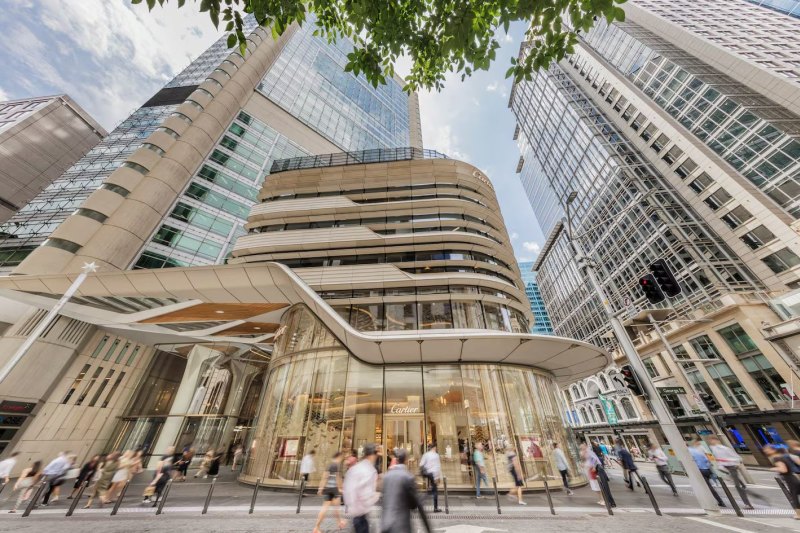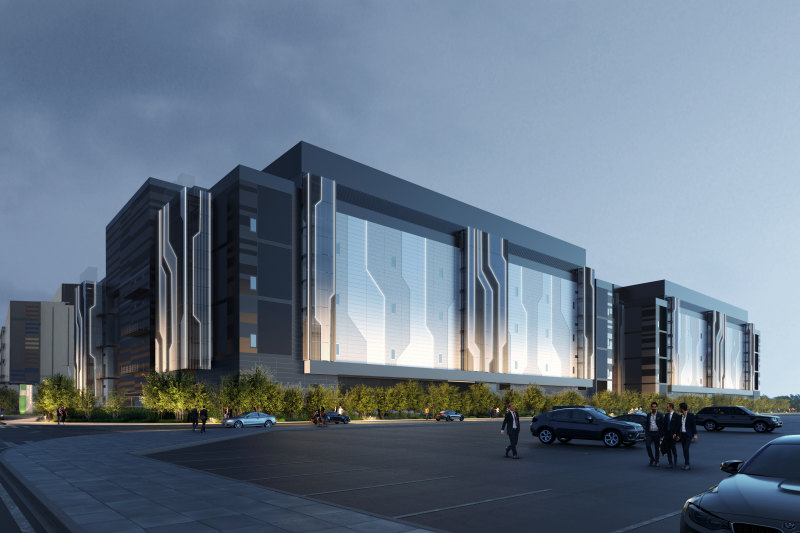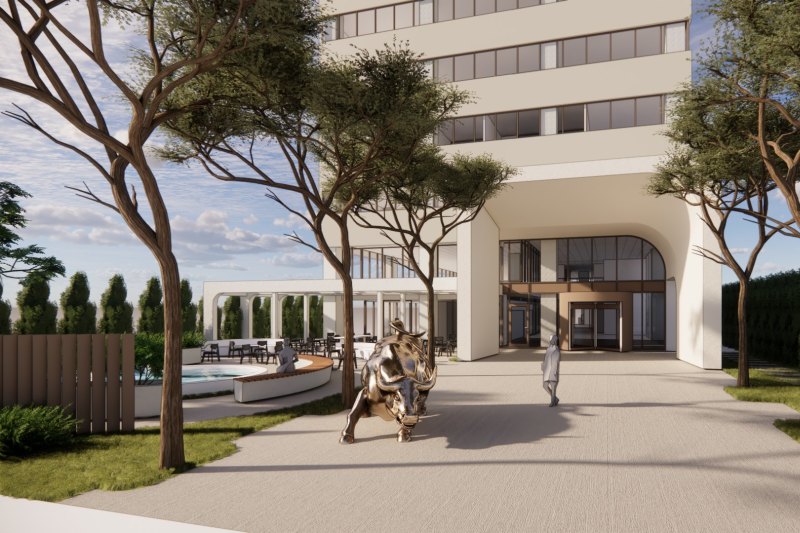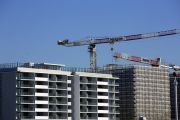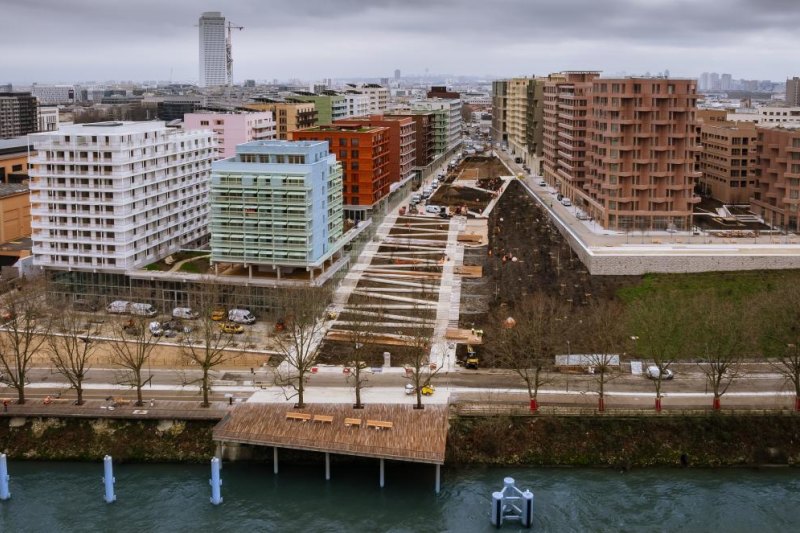
A solution to the athletes village conundrum might be on the Gold Coast
A legacy-defining plan from Paris Olympics organisers to revitalise a poor community on the northern outskirts of the city and turn the athletes village into affordable homes is at risk from soaring building and finance costs.
The conundrum may resonate with Brisbane 2032 organisers, who are grappling to find the most cost-effective way to host a Games that will also leave a lasting benefit for the south-east of Queensland. But an experience from the 2018 Gold Coast Commonwealth Games may shed light on a solution.
After winning the rights to the Games in 2017, organisers zeroed in on a 52-hectare industrial wasteland sitting across the three municipalities of Saint-Ouen, Saint-Denis and L’Ile-Saint-Denis as an urban area that would benefit from regeneration.

“It was not very beautiful,” Patricia Pelloux, a director of City of Paris-funded urban planning association Atelier parisien d’urbanisme APUR and a member of the original Paris bid team, told The Australian Financial Review.
“We chose the location of the Olympic village where we needed housing.”
The village, which is accommodating 14,250 competitors during the Games, cost a reported $US1.85 billion ($2.8 billion) to build. It opened on schedule in February, with housing, training, office and leisure facilities built around a former power plant-turned film studio that temporarily serves as the main dining hall for athletes.
The project was a success for the Games, and its delivery agency Solideo, which aimed to avoid unnecessary big-ticket expenditure on new infrastructure, using local and temporary facilities – such as beach volleyball beneath the Eiffel Tower.
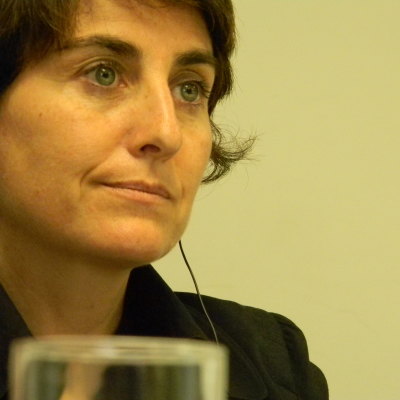
The infrastructure-light mindset was an attempt to avoid excesses of past Games, such as Rio 2016, which saddled the hosts with white elephant assets and huge debts. Aside from the village, the only other big-ticket build was the Olympic aquatic centre about 1km down the road.
But high borrowing and building materials costs have put the post-Games part of the revitalisation plan under a cloud. More public money may be needed to complete a slated refurbishment of the village into 3000 new homes, and a new park and hotel.
For while Solideo committed private developers Vinci Immobilier and Icade to push through with retrofitting the housing straight after the Games, sales have been poor, giving the developers little cash to fund the necessary work and get them into the private market.
Even at residential sales prices about €5500 ($9000) per square metre – less than the Paris average €7-8000 per square metre – developers were struggling to sell, one Paris consultant with knowledge of the project told the Financial Review.
“It’s not possible in the current environment,” the consultant said. “It’s going to be very difficult after the Games.”
In March, Icade conceded it was a tough environment to sell apartments, Le Monde reported.
Solideo declined to comment, referring the Financial Review to the Paris 2024 Olympic Committee. Paris 2024 head of legacy Marie Barsacq said the housing was to be financed privately but also publicly, as almost one-third of it was earmarked for conversion into social and affordable accommodation.
But if only the social component of the housing went ahead, it would deny the area – largely known pejoratively as a banlieue, or low-income suburb – a vital element of social diversity, the consultant said.
“If you don’t want the Olympic village to become a new banlieue, you want to avoid that,” he said.
It is not the first time market conditions have affected planned legacy developments of an Olympic Games.
Housing developed for the London 2012 athletes’ village – for which Lendlease was development manager – was due to include a range of housing types including build to sell, build to rent and affordable rental homes.
But in a private market weakened by the GFC, the UK’s Olympic Delivery Authority changed plans to make the units predominantly build to rent, so it did not need to rely on private sales to sell down the housing.
That experience prompted Grocon’s successful bid to develop and then sell down the Gold Coast 2018 Commonwealth Games athletes’ village as a build-to-rent asset to an institutional investor, kick-starting the sector in this country, one Australian property figure said.
“It’s part of the history of BTR,” the person said. “It demonstrated you could fund and deliver institutional BTR in Australia.”
Now known as Smith Collective, the development is owned by UBS and the Abu Dhabi Investment Council.
In Paris, legacy plans for the athletes village go well beyond housing, as they tie in with separate redevelopment plans for the area. Expansion of the adjacent Stade de France-Saint Denis train station – connecting it to several lines of Paris’ metro network, will put a rocket under the development of the area, Ms Pelloux said.
“Paris 2024 is an opportunity to have better links between Paris and the north of Paris,” Ms Pelloux said in an interview at her 13th arrondissement office. “It will be the largest hub of the Grand Paris metro.”

